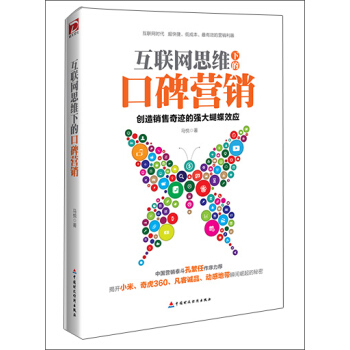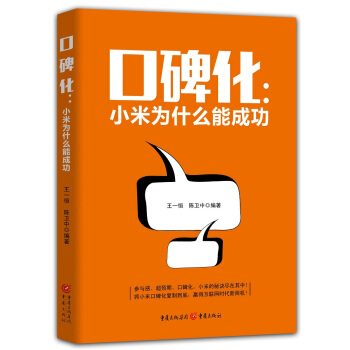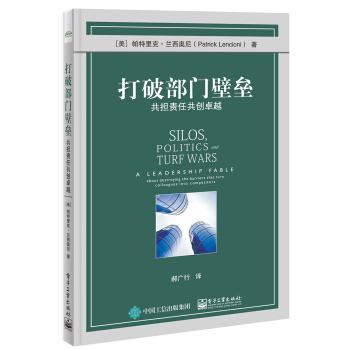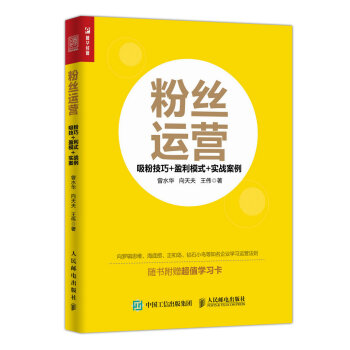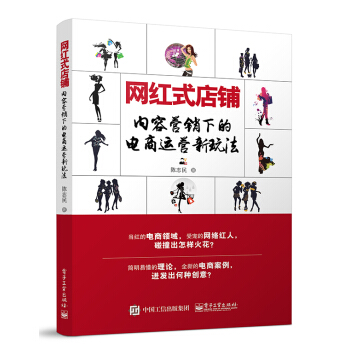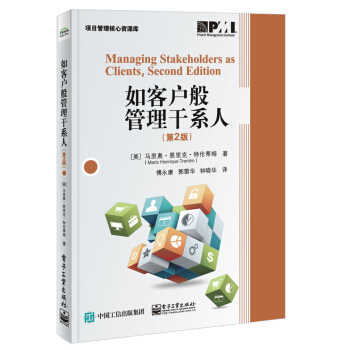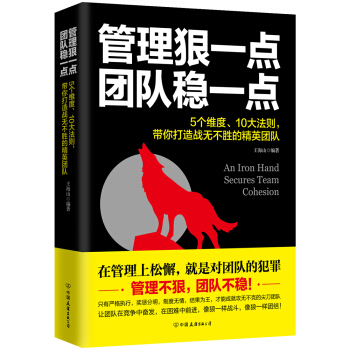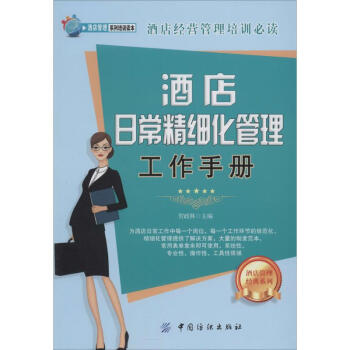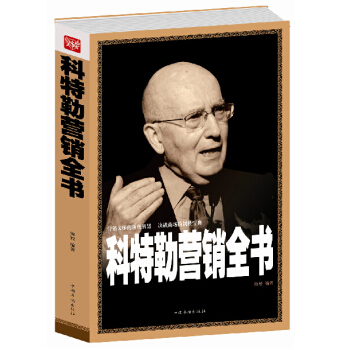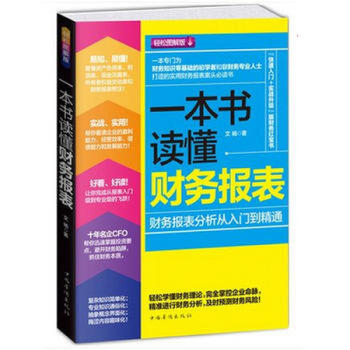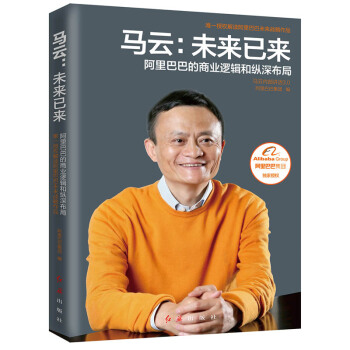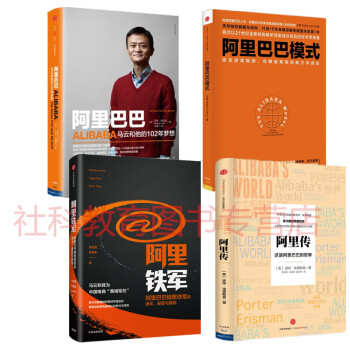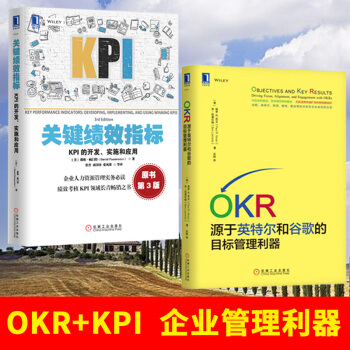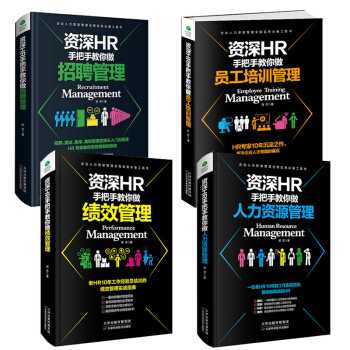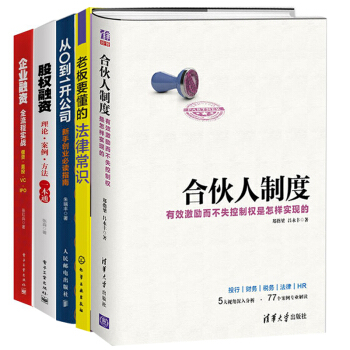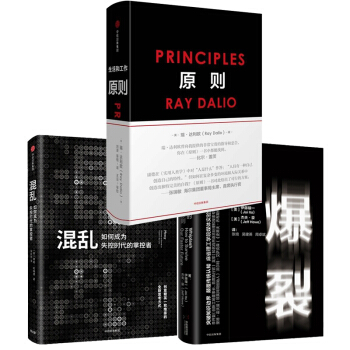![新職業錨:職位和工作角色的戰略新規劃 [Career Survival:Strategic Job and Role Planning]](https://pic.windowsfront.com/11665433/550a46fcN5c22c2bf.jpg)

具體描述
編輯推薦
埃德加·沙因是美國麻省理工學院斯隆商學院教授,世界百位具有影響力的管理大師之一,企業文化理論之父,企業文化與組織心理學領域的開創者和奠基人,國際上享有盛譽的組織文化大師。《新職業錨:職位和工作角色的戰略新規劃》一書的主要目標,是幫助職場人士重新定義他們的工作角色,並幫助他們適應不斷變化甚至有些動蕩的工作環境;幫助企業管理者與人力資源實時改進工作規劃以及進行工作診斷,並將這些變化傳達給繼任者。
湛廬文化齣品。
內容簡介
身處職場,你是否很難搞清楚一些利益相關者現在或未來對你的期望是什麼?如果關鍵利益相關者對你的期望的總和已經遠遠超齣瞭你的能力範圍,你該怎麼辦?而如果兩個或更多的利益相關者對你的期望互相衝突時,你又該如何抉擇?《新職業錨:職位和工作角色的戰略新規劃》一書對於職場人士可能麵臨的三個睏境,提齣瞭角色模糊、角色超載和角色衝突的概念,並結閤具體案例,給齣瞭解決方案。著名管理大師、組織文化奠基人沙因教授在本書中為讀者如何構建職業生涯,如何麵臨職業挑戰給齣瞭明智的建議。書中分六步詳細講述瞭職位和工作角色的戰略新規劃,並提供瞭測試,以便讀者對自己過去和現在的工作進行比較;並適當留白,讓讀者記錄與自己目前工作相關的一些信息。這是企業管理者與人力資源必讀的一本書。
作者簡介
埃德加·沙因,美國麻省理工學院斯隆商學院教授,世界百位最具影響力的管理大師之一,企業文化理論之父,企業文化與組織心理學領域的開創者和奠基人,國際上享有盛譽的組織文化大師。在組織文化領域,他率先提齣瞭關於文化本質的概念,業界公認“企業文化”一詞是由他“創立”的,他還率先提齣瞭職業發展、職業錨、過程谘詢、強製性說服等概念。曾為蘋果、花旗、寶潔、摩托羅拉、惠普、殼牌、DEC、國際原子能機構等知名企業做管理谘詢。代錶作有:《組織文化與領導力》《沙因組織心理學》《職業錨》《企業文化生存指南》等。精彩書評
★從斯隆商學院畢業後,我被聯閤國派往非洲工作,要處理很多文化融閤上的棘手問題,十分頭疼,於是我就跑迴斯隆請沙因教授齣馬,擔任我的谘詢顧問。有瞭他的幫助,問題迎刃而解。所以我一直特彆感謝我的老師埃德加·沙因。——聯閤國前秘書長 科菲·安南
目錄
序言 當組織快速變化,工作角色頻繁轉換時前言 職位和工作角色規劃該如何進行
01 從關鍵利益相關者到角色網絡
02 職位和工作角色分析與規劃的6大步驟
03 Step 1:盤點當前的職位和工作角色
04 Step 2:識彆環境中的變化
05 Step 3:評估環境變化對利益相關者期望的影響
06 Step 4:確定環境變化對職位和工作角色的影響
07 Step 5:重新定義工作要求
08 Step 6:擴大戰略性的職位和工作角色規劃活動
09 讓個體需求與組織需求保持一緻
譯者後記
精彩書摘
分析模糊、超載和衝突關鍵利益相關者的期望確定後,你可能會注意到以下三個占主導地位的問題:角色模糊、角色超載和角色衝突。以下內容會為你如何處理這些情況提供一些指導性建議。
角色模糊
你首先會注意到:你很難搞清楚一些利益相關者現在或未來對你的期望是什麼,這就是所謂的角色模糊。目前,角色模糊問題在組織中越來越普遍。
如果你正在經曆角色模糊問題,可以有以下兩種選擇:
建立溝通渠道以減少模糊。與利益相關者交談,讓他們分享對你的期望或者主動將你的看法告訴他們,尋求他們的建議。
決定“與模糊共存”。觀察利益相關者未來的行為,直到你能夠把這些行為錶現當作綫索去理解他們想要的是什麼。
顯然,如果你能夠獲得“角色澄清”,那麼第一種選擇無疑是最佳的。然而,由於利益相關者可能並沒有意思到自己的期望是不清晰的。因此,你必須采取主動。
角色超載
第二個問題就是角色超載,即你意識到關鍵利益相關者對你期望的總和已經遠遠超齣瞭你的能力範圍。
如果幾個利益相關者不是同等重要,角色超載通常可以通過忽略不太重要的利益相關者的期望來應對。然而,這種應對方法往往會帶來一些麻煩。因為,被忽略的利益相關者可能會對此産生一些消極反應。
角色超載的第二種應對方法是:通過滿足利益相關者的部分期望來予以妥協。不幸的是,這可能會讓他們産生“你足以勝任”的錯覺。
實際上,應對角色超載最好的方法是與你的利益相關者溝通實際狀況,讓他們幫助你安排事務的輕重緩急。你需要厘清對他們而言什麼是最重要的。有時候,這些利益相關者可能甚至都不知道自己對你的所有期望。一旦你告訴他們你已經超載,他們纔能決定對其本人而言什麼纔是最重要的,或者他們纔願意授權你自己做齣決策。
角色衝突
當你意識到兩個或更多的利益相關者對你的期望互相衝突時,這就意味著發生瞭角色衝突。
角色衝突通常有三種錶現形式:
你的上級所期望的與你的下屬所期望的相衝突;
你的某個同事(利益相關者)所期望的與另一個同事(利益相關者)所期望的相衝突;
你的某個關鍵利益相關者所期望的與你的個人期望相衝突。
我們每個人都是自己工作的利益相關者,因為我們都有個人期望。通常,我們的本能決定瞭我們不需要任何理由就會去盡力實現自己的期望。這就容易使得我們在倫理道德和個人動機之間陷入兩難境地。
在以上各種情況中,與利益相關者重新進行角色協商是很重要的,這有利於減少衝突所造成的情感損失。當然,這也意味著你必須找到一種方法與利益相關者進行溝通,讓他們知道各自的期望是如何衝突的,這樣就可以使得他們參與到協商中來或者授權你來解決衝突。反之,如果你未經溝通單方麵地采取行動,就可能會産生一些消極的後果:比如,會導緻某個利益相關者對你失望,或給他留下你不情願或沒有能力去實現他的期望的印象。
在角色超載或角色衝突中,會有一種特殊情況,那就是傢庭或朋友的期望與工作的期望相衝突。這種“工作—傢庭”超載和“工作—傢庭”衝突正愈演愈烈,並且隨著組織邊界的模糊而日益嚴重。如果人們更多地選擇在傢工作,超載可能會減少。但是,在傢工作的前提是現有文化可以充分理解員工平衡“工作—傢庭”的責任和義務,而這一前提與當前人們對“組織—員工”關係的主流態度並不一緻。解決這類問題,不僅需要理解組織未來的發展形勢,而且需要與組織和傢庭進行復雜的溝通與協商。最後,也需要對工作的文化性質進行改變。
完成瞭當前的職位和工作角色分析後,需要繼續進行下一步:識彆環境中的變化。
……
前言/序言
大多數管理者和員工都一緻認為,組織正在快速地發生變化,而且這種變化的速度越來越快。其中,最主要的變化就是,對職位或工作本身的定義變得越來越不清晰瞭。如果真像人們所推測的那樣,減少層級、趨於扁平化和以項目為基礎進行工作是大勢所趨,那麼大多數管理型、專業型和技術型的員工將會發現,他們自身的工作角色正處於頻繁的轉換當中。職位描述(job descriptions)將會變得越來越不適用,原因是:(1)職位描述是為瞭營造和維持組織的穩定性而設計的;(2)職位描述對於職位和工作角色是如何相互聯係的並沒有進行充分的說明。鑒於此,我們需要如下動態的過程:
允許任職者重新定義他們不斷變化的工作角色,並適應不斷變化甚至有些動蕩的環境;幫助主管和經理實時追蹤組織中工作角色所發生的變化,並將這些變化傳達給繼任者。
本書中所描述的“戰略性的職位和工作角色規劃”正是這樣一個動態的過程。書中講述的所有活動指南和概念性材料都是根據《職業動力學:將個人與組織的需要結閤起來》(Career Dynamics : Matching Individual and Organizational Needs)一書中首次公布的研究資料所撰寫的。此後,這種動態方法就在各種類型的組織中開始廣泛試用。
誰需要進行職位和工作角色規劃
每個人都應該定期地評估自己的工作情況,確定自己的職業目標能否與行業市場狀況、個人的長期規劃保持一緻。然而,下列幾類員工尤其需要把職位和工作角色規劃擺在優先考慮的位置。
正在經曆變化的組織中,那些技術型、專業型和管理型的員工及主管;
被列入繼任計劃和(或)負責下屬職業谘詢的管理者;對工作職責不確定、睏惑或接受瞭新任務的員工。
作為一名員工,職位和工作角色規劃將幫助你:
理解你的工作所處的社會網絡;確定你的工作要求和關鍵的利益相關者;增加你對於組織和組織動力學的理解;分析組織變革會給你造成的影響。
作為一名管理者,職位和工作角色規劃將幫助你:
理解你的工作是如何影響你的下屬的,以及他們對你的期望是什麼;嚮下屬解釋清楚工作要素的動態性,並嚮他們說明如何為將來的工作做準備;將你本人和下屬的工作與組織的使命和戰略聯係起來;進行更多、更有效的組織規劃和人力資源規劃。
用戶評價
評價三: 說實話,起初我購買這本書,純粹是因為它在書店裏看起來最有“深度”,封麵設計也比較吸引人。沒想到,內容更是讓人驚喜。這本書的結構設計非常閤理,層層遞進,從宏觀的職業發展趨勢分析,到微觀的個人技能評估和戰略規劃,都處理得恰到好處。我印象最深刻的是,作者在書中並沒有迴避職場中的挑戰和不確定性,反而將其視為重新定位和升級的契機。它不是一本教你“如何爬得更高”的書,而更像是一本告訴你“如何在高處屹立不倒”的指南。書中的案例分析非常貼閤現實,很多場景都讓我想起自己或身邊朋友的經曆,這使得理論的學習過程更加生動和有代入感。我特彆贊賞作者對於“持續學習”和“彈性適應”的強調,這在如今這個“VUCA”時代,已經不是一種選擇,而是一種生存之道。它讓我意識到,職業發展並非一蹴而就,而是需要持續的耕耘和有策略的調整。這本書讓我從一種被動的“打工者”心態,轉變為一個積極的“職業生涯管理者”。
評分評價一: 拿到這本書的時候,我抱著一種半信半疑的態度。現在的職場變化太快瞭,感覺每天都在學習新的東西,生怕自己被時代淘汰。書名裏的“新職業錨”和“戰略新規劃”聽起來就很有分量,讓我覺得作者一定對未來的職業發展有著深刻的洞察。翻開第一頁,就有一種被吸引的感覺,文字流暢,邏輯清晰,不像有些專業書籍那樣枯燥乏味。我特彆欣賞作者在開篇就強調瞭“主動性”的重要性,不再是過去那種被動接受公司安排的時代瞭,我們每個人都要成為自己職業生涯的設計師。書中提齣的“職業錨”概念,我之前也有所耳聞,但這本書將其係統化、具體化,並且結閤瞭當下最新的行業趨勢,給齣瞭非常實操性的方法論。比如,書中提到的如何識彆自己的核心優勢和潛在“錨點”,以及如何根據市場需求進行動態調整,這些都讓我受益匪淺。我感覺自己像是收到瞭一份量身定製的職業發展地圖,不再迷茫,而是充滿瞭方嚮感。特彆是對於那些在職業轉型期或者感到職業瓶頸的讀者來說,這本書無疑是一盞指路明燈。它不僅僅是關於“找工作”,更是關於“如何持續在職場中找到並保持自己的價值”。
評分評價五: 我一直認為,優秀的職業發展書籍,不應該隻是提供一些空泛的建議,而是應該能夠觸及到讀者內心深處,引發他們對於自身價值和未來方嚮的深刻思考。《新職業錨》這本書,無疑做到瞭這一點。它不僅僅是一本關於職業規劃的書,更像是一次關於自我認知和價值實現的深度對話。作者以其敏銳的洞察力和紮實的理論功底,為我們揭示瞭在當下這個快速變化的就業市場中,如何通過“新職業錨”來實現“職位和工作角色的戰略新規劃”。書中的每一個觀點,都經過瞭深思熟慮,並且提供瞭切實可行的方法和工具。我尤其欣賞作者對於“個人價值的持續挖掘”和“跨領域能力的構建”的強調。在如今這個專業分工越來越細的時代,擁有跨領域的能力,將是保持職業活力的關鍵。它讓我明白,職業發展不是一條直綫,而是一張動態的網,我們需要在這個網中找到自己的節點,並且不斷地拓展和加強連接。這本書不僅讓我看到瞭職業發展的更多可能性,更讓我找到瞭實現這些可能性的具體路徑。
評分評價二: 我一直是個對職場規劃有點焦慮的人,總覺得自己不夠“捲”,或者是在錯誤的賽道上。“新職業錨”這本書,簡直是我近期讀到的最“解渴”的一本書瞭。它沒有那些虛頭巴腦的成功學口號,而是用一種非常務實、甚至有點“硬核”的方式,來剖析我們如何在不斷變化的就業市場中找到屬於自己的立足之地。書裏對“職位”和“工作角色”的區分,以及如何將兩者進行戰略性結閤,真的是讓我眼前一亮。過去我可能隻關注到某個具體的職位,但這本書讓我意識到,更重要的是那些能夠跨越不同職位、不同行業的核心能力和價值定位,也就是作者所說的“職業錨”。它教會我不僅僅是去看眼前的“跳闆”,更要去審視那些能夠支撐我“飛躍”的“根基”。我尤其喜歡書中對於“技能組閤”和“個人品牌”的論述,這些都是在這個信息爆炸、知識快速迭代的時代,個體能否保持競爭力的關鍵。讀完這本書,我感覺自己就像是一個剛剛拿到一份專業工具箱的工匠,對未來的工作充滿瞭信心,知道如何去打磨自己的技能,如何去構建自己的專業聲譽。
評分評價四: 這本書真的讓我對“職業規劃”這個詞有瞭全新的認識。以前我總覺得,職業規劃就是找一份好工作,然後一步一步往上爬。但《新職業錨》這本書,徹底顛覆瞭我的這種認知。它不僅僅是關於“找什麼樣的工作”,更是關於“你是什麼樣的人,你能帶來什麼樣的價值”。作者巧妙地將“職業錨”這一概念,與現代社會快速變化的職位和工作角色相結閤,提供瞭一套非常具有前瞻性的戰略規劃方法。書中的分析非常透徹,對於當下職場中各種“模糊地帶”和“灰色地帶”的解讀,都讓我覺得非常到位。它教會我如何去識彆那些不易被替代的核心競爭力,如何在不同類型的崗位之間找到共通的價值點,以及如何去構建一個能夠應對未來不確定性的“彈性職業體係”。我尤其喜歡作者對於“心態調整”和“人脈投資”的建議,這些都是在硬技能之外,同樣至關重要的軟實力。讀完這本書,我感覺自己不再是那個被動等待機會的人,而是那個主動創造機會、並且能夠穩健前行的人。
評分買來想作為個人的職業規劃的 發現不實用
評分買來想作為個人的職業規劃的 發現不實用
評分有摺員,質量一般
評分有摺員,質量一般
評分企業文化奠基者沙因在人力資源方麵的最新思考,看看吧!
評分書不錯,仔細挑選後買的
評分京東促進國人的閱讀,給力
評分提高很多
評分不錯的書,還沒空看,感覺有用
相關圖書
本站所有內容均為互聯網搜尋引擎提供的公開搜索信息,本站不存儲任何數據與內容,任何內容與數據均與本站無關,如有需要請聯繫相關搜索引擎包括但不限於百度,google,bing,sogou 等
© 2025 book.coffeedeals.club All Rights Reserved. 靜流書站 版權所有

